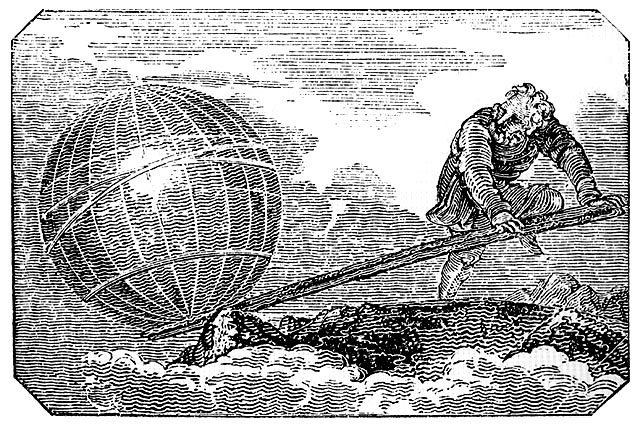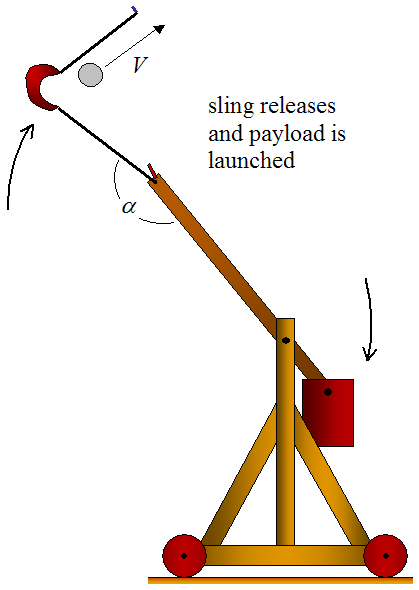How does the Trebuchet launch objects? To understand this an understanding of the mechanics of the Trebuchet must be grasped first.
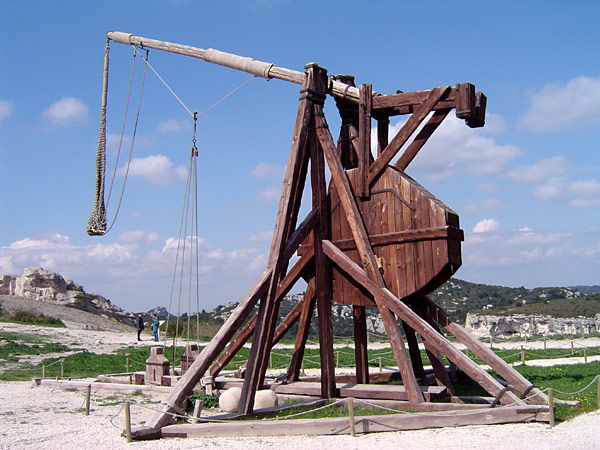
A trebuchet makes use of a simple machine to lift and then drop a massive object in order to launch another smaller object. This simple machine is the lever, which allows one to move a great mass with little effort.
As Archimedes, the renown scientist and inventor of ancient Greece stated "Give me a place to stand, and I will, move the earth" (Archimedes Lever). He is pictured above doing as he said, moving the earth with a lever. Applying a force to a strong and long enough lever with a correctly placed fulcrum can lift massive objects.
The mathematics behind this goes like this:
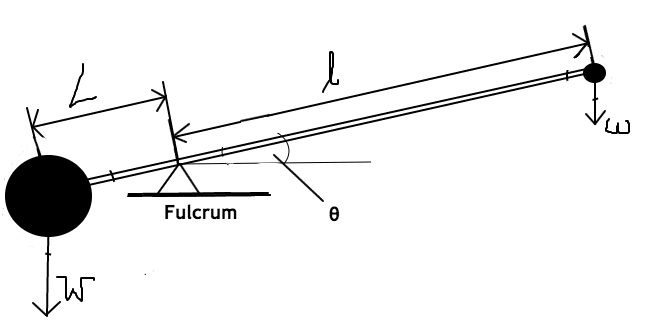 (My image) |
Assuming the system in the diagram
would settle to equilibrium (horizontal position),
then the following must be true.
ℓ
• (w • sin(
θ)) = L • (W • sin(θ))canceling sin(θ) , we get: ℓ • w = L • W
From this equation, and knowing that
W >> w, and L >> ℓ we see that a
smaller force w can in fact lift a greater force
W, depending on the exact values and the position
of the fulcrum.
|
With the goal of launching w, W would need to be very large to overcome the mechanical advantage ω has with ℓ be much larger than L . Applying enough force (W) by attaching a great enough mass to the L end of the lever would cause the lever to tilt counter-clockwise causing ω to accelerate in the counter-clockwise direction. This would be how ω would be launched.
Now that we know how the lever works in principle and what conditions would be necessary to launch a mass using one, let us look at the trebuchet itself.
Trebuchet Diagram:
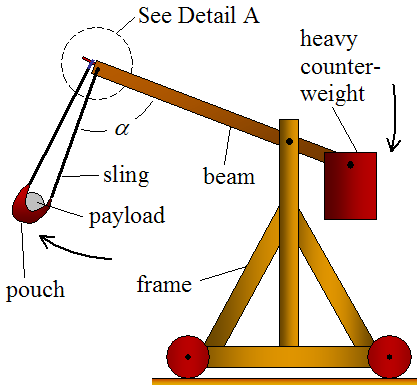 |
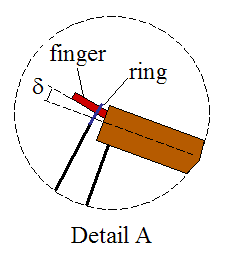 |
To relate this to the simple explanation of the Fulcrum-Lever system above, we see that the lever is now a wooden beam held up by another beam functioning as its fulcrum in its med-section. The 'heavy counter-weigh' is now the large mass that when released will launch 'payload' (the smaller mass) stored in the pouch. The frame, which supports the fulcrum and the entire system is assumed to be stationary, more on that later.
The arrows on that diagram above show that as the 'heavy counter-weigh' falls the sling carrying the mass is lifted. Assuming the 'heavy counter-weigh' is much larger that the 'payload', the system will turn about the axis of rotation, where the fulcrum and the lever are attached, quite quickly. As ℓ in this case is larger that L, and the beam is rigid, the 'payload will experience a far greater acceleration than the 'heavy counter-weigh' as it is launched. See below for the mathematics behind this, it has to do with the angular acceleration magnified by the contrast in size between ℓ and L.
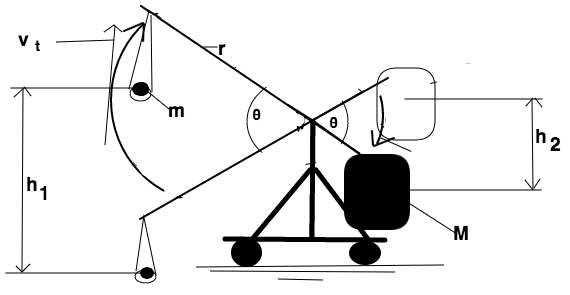
|
Ug2i + Ug1i + K2i+ K1i = K2f + K1f +Ug2f
+
Ug1f (M•h2•g
)+(m•h1i•g) +0 +0 = 0+(½•I•(ω
)2 )+0+(m • h1f
• g)
ω = (2•g•(Mh2 + mh1i
– mh1f)/I)1/2 vt =
ω
• r |
Conservation of Mechaical Energy Expanded into equations for potential and kinetic energy Solved for angular velocity Converted into final tangential velocity |
| M - larger mass |
m - smaller mass |
ω - angular velocity |
h = heights |
vt - tangential velocity |
r -radius |
| I - Moment of Inertia this comes
from the length of r and the mass of the beam) |
g - gravity |
In this manner, using the conservation of mechanical energy and the equations for potential and kinetic energy that follow, we can solve for the final angular velocity which is converted to tangential velocity. Note that conservation of mechanical energy is never entirely true and the calculations above only serve as a model for what occurs in the launching process.
This is what the Trebuchet will look like at the moment that the tangential velocity is calculated:
An assumption made earlier in this article was that none of the energy of the launch resulted in horizontal translation of the trebuchet, despite there being wheels present. Although dissipative forces were not accounted for above, this assumption takes into account friction. To move a body static friction must be overcome, since the trebuchet model has four wheels, and the trebuchet is massive, it is unlikely that it will budge, though not impossible. To figure out if it will budge, see the calculations below.
|
Ffr = µ s • Nt
Ffr
= 6.08 • mt |
Frictional Force is equal to the normal force of the trebuchet multiplied by the coefficient of static friction (between wood and concrete) Substituting values Solving for maximum static frictional force |
| mt
- Mass of Trebuchet |
Ffr
- Static Frictional Force |
g - gravitation acceleration
(9.81m/s^2) |
Nt -
Normal force of trebuchet |
µs
- Coefficient of static friction (wood and concrete)
|
So for the trebuchet to move, there would have to be a force generated by the launch in any horizontal direction that surpasses the frictional force calculated above.
Click here. To learn about the 'payloads' trajectory, after it's launch.
